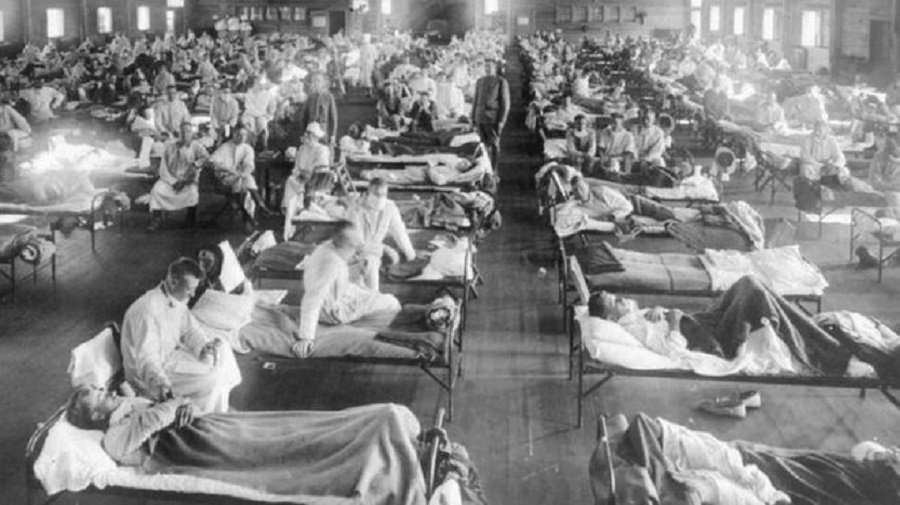As India attempts to tackle the novel coronavirus outbreak (COVID-19), a similar outbreak in 1918 can be the source of many important lessons for the country.
The infamous ‘Spanish Influenza’ of 1918 has many parallels to the current outbreak and there are many differences as well.
Let us talk about differences, first.
Unlike 1918, India is an Independent state now; at the time of the infamous ‘Spanish flu’, India was ruled by a colonial government. Another big difference is that technically, novel coronvirus is different from an influenza virus although they cause similar symptoms.
Now, the similarities.
The 1918 experience matters for one simple reason: it was the last major global pandemic that spread rapidly within India.
The ‘Spanish flu’, as it was also known, was initially noticed in military camps during World War I. Countries fighting the war — Britain, Germany, France and the US — however, kept it secret to reportedly keep the morale of the forces high.
The flu reached the shores of Mumbai — then known as Bombay — on May 1918.
It was responsible for the deaths of around 10 to 20 million people in India: A fifth of the total number of 50 to 100 million deaths across the world.
The severity of the disease in Mumbai led researchers to call it ‘The Bombay Influenza’ or ‘The Bombay Fever’.
The Ghats along the River Ganga ran out of wood as the bodies piled up, according to a letter written by renowned Hindi poet Nirala, which is available in his collected works. Prominent citizens from Mahatma Gandhi to writer Munshi Premchand are suspected to have fallen sick before recovering.
A full reconstruction of the virus in 2005 showed that no other influenza virus was as dangerous and virulent as the one that surfaced in 1918.
Lessons for India
In BBC World, Soutik Biswas wrote the medical realities are vastly different now. Although there’s still no cure, scientists have mapped the genetic material of the coronavirus, and there’s the promise of anti-viral drugs, and a vaccine. The 1918 flu happened in the pre-antibiotic era, and there was simply not enough medical equipment to provide to the critically ill. Also western medicines weren’t widely accepted in India then and most people relied on indigenous medication.
Yet, there appear to be some striking similarities between the two pandemics, separated by a century. And possibly there are some relevant lessons to learn from the flu, and the bungled response to it, he writes.
Like a century ago, civilians will play a key role in limiting the virus’ spread. And as coronavirus cases climb, this is something India should keep in mind.
Limiting the spread of the pandemic should not be the responsibility of Government authorities alone. NGOs and volunteers will have to join the fight.
“To avoid an attack one should keep away from all places where there is overcrowding and consequent risk of infection such as fairs, festivals, theatres, schools, public lecture halls, cinemas, entertainment parties, crowded railway carriages etc,” wrote the paper. People were advised to sleep in the open rather than in badly ventilated rooms, have nourishing food and get exercise”, Times of India had reported in 1918.
This holds true even for COVID-19 in 2020.






